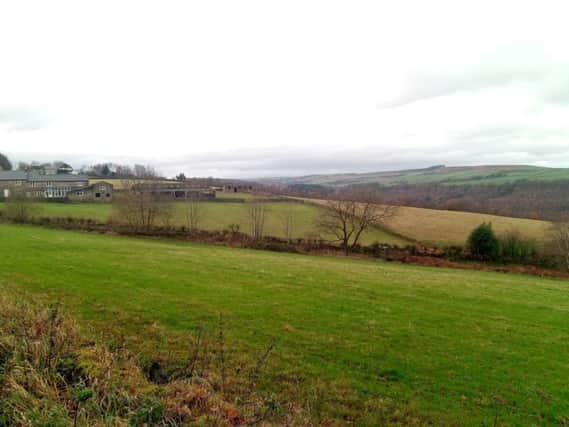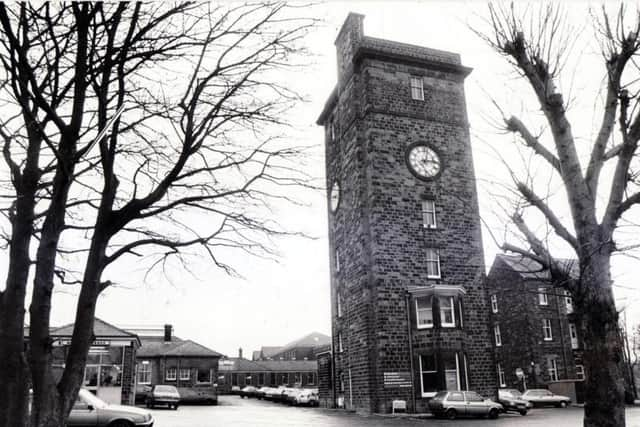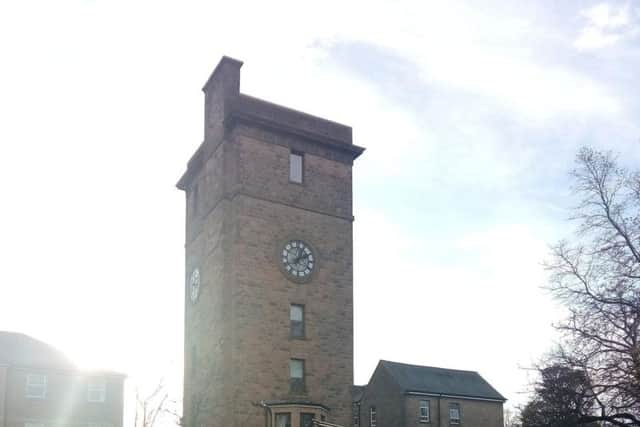From prisoners-of-war to Prisoners' Wives: Focus on Lodge Moor, Sheffield


With its panoramic views, picturesque walks and gentle pace of life, all less than half an hour by bus from Sheffield city centre, it's easy to see what makes this such a sought-after postcode.
The well-heeled suburb on the fringes of the Peak District possesses an almost serene charm, with barely a blade of grass out of place in the lawns of some particularly grand homes, commanding even grander vistas.


Advertisement
Hide AdAdvertisement
Hide AdBut wander into the woodlands, where waterfalls tumble past mossy rocks, or meander across the moors, towards the breathtaking scenery of the Rivelin Dams and Redmires Reservoirs, and the area's dramatic past soon reveals itself.
During the First World War, around 1,000 civilians from all walks of life signed up to join the Sheffield 'Pals' Battalion.
They trained on Lodge Moor's outskirts, where the landscape still bears testament to their presence through the traces of training trenches they dug and the hillocks blasted into shape by explosives they tested.
More than 500 of the battalion's members would be killed or seriously wounded in just three days as the Battle of the Somme began in July 1916.


Advertisement
Hide AdAdvertisement
Hide AdLodge Moor also housed a prisoner-of-war camp, where, during the First World War, Karl Dönitz, who decades later succeeded Hitler to briefly become the Third Reich's final Führer, was held.
During the Second World War, a group of German prisoners reportedly attempted unsuccessfully to tunnel their way out.
Italian prisoners were afforded greater freedom, being trusted to roam the countryside and work the land, with some striking up lasting relationships with the locals and settling in the city for good.
Ken Scott, whom I meet with his wife Pat in The Sportsman pub on Redmires Road, tells me he knows a man who today collects buttons in the area which were left behind when the prisoners' uniforms were burned.


Advertisement
Hide AdAdvertisement
Hide Ad"If you walk around the area where the camp was there are still patches where nothing grows, which I've been told is because of all the metal that was burned there," he adds.
Lodge Moor is perhaps best known for the hospital of the same name, which was originally built to treat smallpox patients in isolation but later cared for those with spinal injuries - including many victims of mining accidents - before its closure in 1994.
In 1955, tragedy struck when a stricken US fighter jet ploughed into the hospital, killing one patient and injuring seven others.
Today, the hospital is a smart housing estate, where Jonathan and Cheryl Rowley have lived since moving to the area 12 years ago.


Advertisement
Hide AdAdvertisement
Hide Ad"They built the estate very sensitively, and it's nice to have lots of open space," say the couple, who have a teenage daughter.
"Lodge Moor is a great place to live. You've got good schools and good public transport but the best thing is the access to the open countryside.
"From our house, there's a path that leads you straight to the dams, and then you can drop down into the Wyming Brook Nature Reserve and the reservoirs.
"There's also a great sense of community and you have Hallamshire Golf Club, which is one of the best in the region, on your doorstep."
Advertisement
Hide AdAdvertisement
Hide AdThe Sportsman pub is the regular meeting place for a group of former work colleagues from King Edward VII School in nearby Crosspool.
"It's a friendly pub and a friendly area, which is very peaceful and has lots of amazing walks," they tell me.


The pub's manager Dave Gilchrist is the man behind Gillyfest, a community music festival which attracts hundreds of people to the watering hole each summer and has raised more than £10,000 for Help for Heroes and £4,000 for the MS Society since it was first staged in 2013.
Dave boasts how the festival can be heard as far away as Crosspool, or so he has been told, before adding there has only ever been one complaint about noise.
Advertisement
Hide AdAdvertisement
Hide AdHe says it is a great example of the thriving community spirit in Lodge Moor.
As well as the festival, the pub is famed locally for its Sunday lunches and, unlike your average local, often gets punters dropping in by helicopter or microlight.
In 2014, it hosted a centenary commemoration of the Pals battalion, for which a beer was specially brewed. Famous visitors in recent years have included The One Show's Gyles Brandreth, who dropped in during a carol service, and actors Emma Rigby and Andrew Tiernan, who were filming scenes nearby for Prisoners' Wives.
For many residents, St Luke's Church, on Blackbrook Road, is the heartbeat of the community.
Advertisement
Hide AdAdvertisement
Hide AdAs well as services, it hosts knitting sessions, a rambling group, a children's choir and much more.
Mary Milner, a retired childminder who has lived in Lodge Moor for nearly half a century, is among the parishioners.
"It's a very caring community. I've just been in hospital and members of the church really rallied round, cooking meals for my husband and asking if we wanted the dog walking," she said.
Lodge Moor has a relatively elderly demographic but good schools and larger houses in the area make it a popular choice for growing families, and Mrs Milner said many more young people were now coming to St Luke's.
Advertisement
Hide AdAdvertisement
Hide AdThere's not a lot to the neighbourhood beside the spectacular scenery. Just a handful of pubs, the church and a popular parade of local shops, including a butchers and greengrocers.
But almost everyone I meet tells me there's only one thing they would change about the area, and that's the weather.
Biting winds and seemingly endless snow in winter are the price you pay for those amazing views in one of Sheffield's highest points, more than 900 feet above sea level.
Pat Scott recalls one particularly fierce gale in the early 60s when, she says, people were running around with colanders on their heads to protect themselves from falling debris, and she could feel the roof rising and falling with each gust.
Advertisement
Hide AdAdvertisement
Hide AdBut it is the snow, sometimes so deep villagers are left stranded, which is her biggest bugbear.
"It doesn't know when to go, You get people coming here in the summer and buying houses because it looks so nice, but come October it's a different carry-on. When they've been here through the winter they change their minds," she jokes.
When Mrs Milner first came to the area, she remembers having to dig her way in and out of her house some winters, with snow occasionally reaching the top of the door.
"We've had some rotten winters but it's definitely been milder in recent years," she adds.